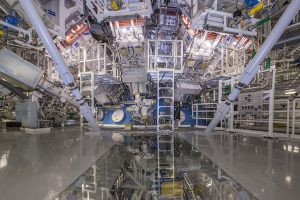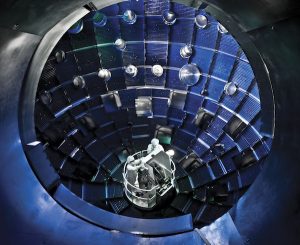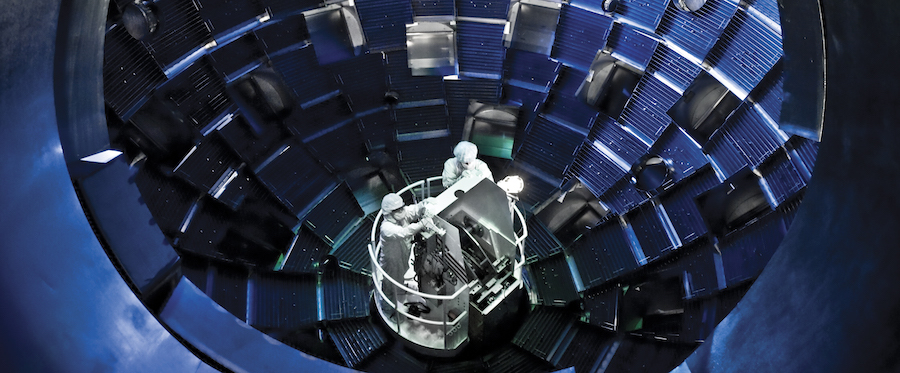A Look Inside the World’s Largest Laser
A Look Inside the World’s Largest Laser
- Registration fee: $20
- Sponsored by: Lawrence Livermore National Laboratory

Seen from above, each of NIF’s two identical laser bays has two clusters of 48 beamlines, one on either side of the utility spine running down the middle of the bay.
NOTE: Start and end times given for field trips are the times when the trips depart from and return to the Marriott Marquis San Francisco.
The National Ignition Facility (NIF), the world’s largest and highest-energy laser, consisting of 192 individual laser beams that converge on a tiny target, creating temperatures and pressures similar to those that exist only in the cores of stars and giant planets and inside nuclear weapons. The facility is funded by the U.S. Department of Energy’s National Nuclear Security Administration (NNSA) and is a key element of NNSA’s Stockpile Stewardship Program to maintain the reliability and safety of the U.S. nuclear deterrent without full-scale testing.

The NIF Target Bay (shown here and above) served as the set for the engine room of the Starship Enterprise in the 2013 film “Star Trek: Into Darkness.” NIF’s 192 laser beams converge at the center of this giant sphere to make the tiny hydrogen fuel pellet implode.
On the tour, attendees will hear about the work of NIF scientists, engineers and technicians, with their national and international collaborators, to use NIF in three key research areas: to help ensure the nation’s security through stockpile stewardship; to make important advances toward achieving ignition in the laboratory for the first time, potentially creating a path to a clean, safe, carbon-free energy future; and to advance a wide variety of scientific disciplines, including astrophysics, materials science, particle physics and X-ray and neutron science.
Visitor badges are required for this tour. To obtain badges, attendees should plan to download the information form on this page and submit it as promptly as possible. We regret that because several weeks are required to process a request for an international badge, only US citizens can now be added to the tour.

